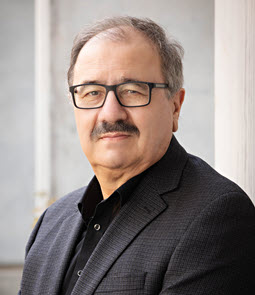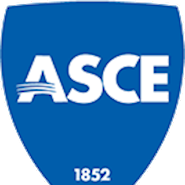 ]
] Pantelides
Christakis P. “Chris” Pantelides, Ph.D., P.E., F.ASCE, a professor of civil and environmental engineering at the University of Utah, has been named a fellow by the ASCE Board of Direction.
Pantelides has contributed greatly to the seismic rehabilitation of reinforced concrete structures, and specifically, has developed methods for seismic rehabilitation of beam-column T-joints with carbon-fiber-reinforced polymer (CFRP) composites for bridges. He has also developed seismic rehabilitation methods for precast concrete wall connections as well as exterior and interior beam-column joints in reinforced concrete buildings, using CFRP composites.
He has created a rapid seismic repair method for reinforced concrete columns using shape modification with headed steel bars and fiber-reinforced polymer composite shells, and introduced new details for the seismic performance of grouted column-to-footing connections using accelerated construction. Recently, he has developed the use of buckling restrained braces as a seismic retrofit in reinforced concrete buildings and bridges.
His research includes the seismic performance of self-centering structural systems with posttensioning high-strength bars and stretch length anchors through cyclic tests at the University of Utah and shake table tests at the University of Nevada–Reno. Pantelides has also studied the blast load performance of reinforced concrete and fiber-reinforced concrete walls. He has developed axial stress-strain confinement models for reinforced concrete rectangular and circular columns with fiber-reinforced polymer composite jackets. He studied the axial performance and stress-strain confinement models of short and slender concrete columns internally reinforced with fiber-reinforced polymer spirals and longitudinal steel and/or fiber-reinforced polymer bars.
Pantelides is one of three faculty members involved in the design, construction, and shakedown of the three-story full-scale modular testbed building at the NHERI University of California San Diego LHPOST6 shake table. This facility uses shear fuses, buckling restrained braces and stretch-length anchors to enable this resilient building to be used by future researchers for studying the seismic performance of various structural systems and nonstructural components. All three elements – shear fuses, buckling restrained braces, and stretch-length anchors – are replaceable, making this building a resilient modular testbed building.
Pantelides has studied the seismic performance of reduced beam section steel beam-column connections without continuity plates. He has developed a mass timber buckling restrained brace and has used it to study the cyclic performance of mass timber braced frames with mass timber buckling retrained braces. He has also studied the seismic performance of glass curtain wall systems using in-plane cyclic racking tests.
He is a member of ASCE’s Utah Section, Wasatch Front Branch. He is also a member of the Structural Engineering Institute and the Earthquake Engineering Research Institute.
Pantelides earned his doctoral degree in civil engineering at Missouri University of Science and Technology, in Rolla, Missouri.



